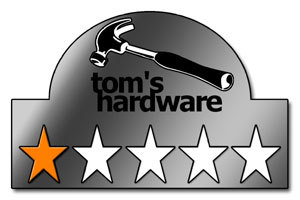The Ultimate Mouse Hunt
Searching For The Lost DPI
On the performance level, it was even worse. Even at low speed the mouse wasn't very precise, about on a level with a standard no-name mouse. And when we increased the resolution, movement became completely erratic. The mouse was uncontrollable. And what about those 2,400 dpi? You have to wonder where that figure comes from. We wanted to know, so we took the mouse apart to have a look at the sensor.
In fact it's a PixArt PAN301A. We checked its specifications on its manufacturer's site. It's a 16x16-pixel sensor operating at 3,000 images per second with a maximum resolution of 800 dpi. Those are standard values for a basic quality mouse. While the specifications are exact and there's no reason to doubt them, the announced resolution is obtained using interpolation, which explains the obvious lack of preciseness. Moreover, looking inside the mouse we learned a few more things.
The focusing lens is not protected by an opaque cover, which implies losses and could explain why the mouse didn't behave very well even at 400 dpi. And the track wheel's floating mount goes a long way toward explaining its lack of preciseness. By now you've gathered that we can't really recommend this mouse, especially since its $40 price is really excessive given the finish and the sensor used. For the same money, go for a Logitech MX 518 without hesitation.
Get Tom's Hardware's best news and in-depth reviews, straight to your inbox.
Current page: Searching For The Lost DPI
Prev Page Raptor Gaming M2 Next Page Microsoft Comfort Optical Mouse 3000-
Ephebus Stay away from this mouse. I've had two, and both started double clicking with the left button after about a year. Logitech's forums are full of topics on this issue. The latest versions of the G7 also showed a regrettable decrease in manufacturing quality - my first mouse had a rubber coating around it (release A0), while on my second G7 (release A2) it was replaced by cheap plastic. Issues with the receptor dongle losing connection with the mouse are also frequent, and Logitech will go to great lengths to avoid honoring their 3-year warranty.Reply


